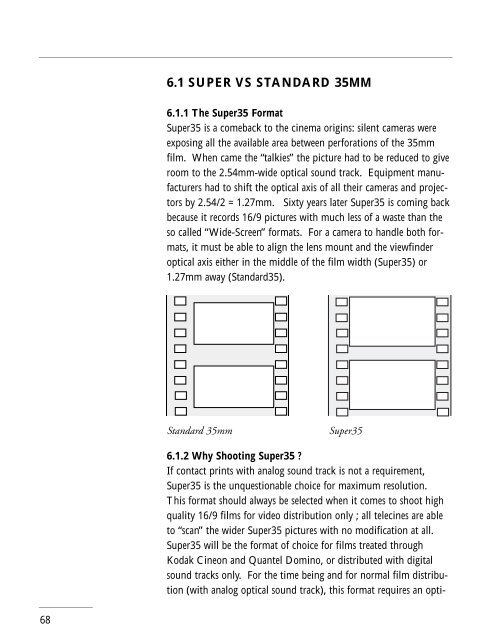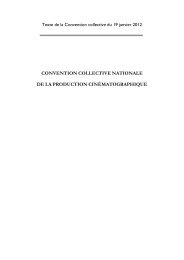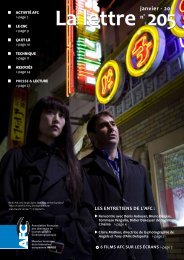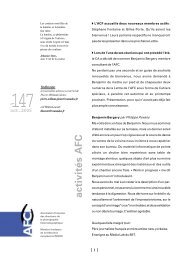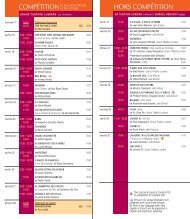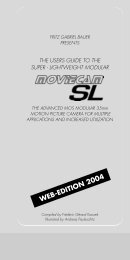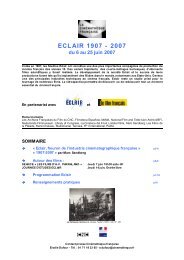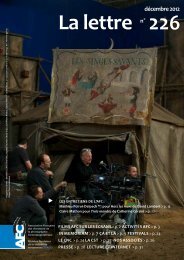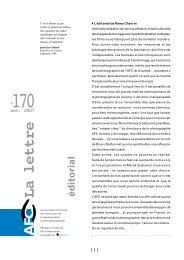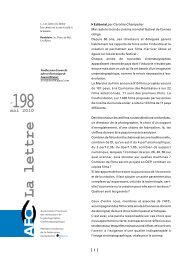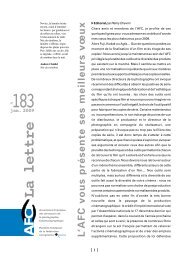Aaton 35 - Panavision
Aaton 35 - Panavision
Aaton 35 - Panavision
- No tags were found...
You also want an ePaper? Increase the reach of your titles
YUMPU automatically turns print PDFs into web optimized ePapers that Google loves.
6.1 SUPER VS STANDARD <strong>35</strong>MM6.1.1 The Super<strong>35</strong> FormatSuper<strong>35</strong> is a comeback to the cinema origins: silent cameras wereexposing all the available area between perforations of the <strong>35</strong>mmfilm. When came the “talkies” the picture had to be reduced to giveroom to the 2.54mm-wide optical sound track. Equipment manufacturershad to shift the optical axis of all their cameras and projectorsby 2.54/2 = 1.27mm. Sixty years later Super<strong>35</strong> is coming backbecause it records 16/9 pictures with much less of a waste than theso called “Wide-Screen” formats. For a camera to handle both formats,it must be able to align the lens mount and the viewfinderoptical axis either in the middle of the film width (Super<strong>35</strong>) or1.27mm away (Standard<strong>35</strong>).Standard <strong>35</strong>mmSuper<strong>35</strong>6.1.2 Why Shooting Super<strong>35</strong> ?If contact prints with analog sound track is not a requirement,Super<strong>35</strong> is the unquestionable choice for maximum resolution.This format should always be selected when it comes to shoot highquality 16/9 films for video distribution only ; all telecines are ableto “scan” the wider Super<strong>35</strong> pictures with no modification at all.Super<strong>35</strong> will be the format of choice for films treated throughKodak Cineon and Quantel Domino, or distributed with digitalsound tracks only. For the time being and for normal film distribution(with analog optical sound track), this format requires an opti-68


